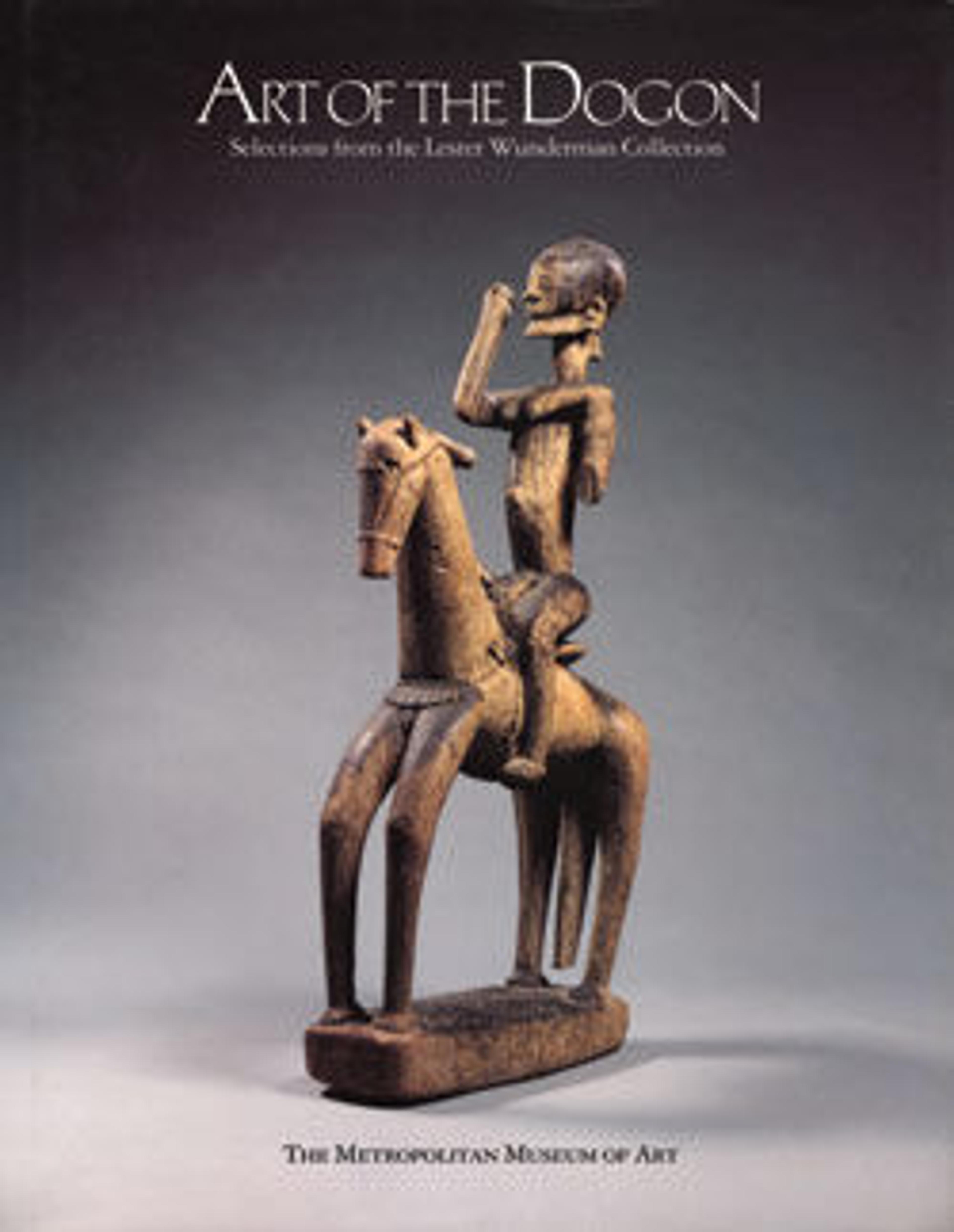Shutter with breasts
The Dogon people live in a dramatic cliffside region of Mali known as the Bandiagara Escarpment, since 1989 named as a UNESCO World Heritage Site. Beginning in the 14th century, when the Dogon supplanted the local Tellem population, the Dogon have built mud brick and stone villages along this dramatic cliff. Villages consist of closely nestled assemblages of living rooms, ceremonial meeting houses, and granaries. Men’s granaries are used to store grain—mainly sorghum and millet that is grown in the annual rainy season. Women’s granaries are smaller and used to safeguard women’s personal property—clothing, jewelry, and utensils. Granaries are accessed through wooden doors and windows that are decorated with sculptures depicting humans and animals. This shutter, for a woman’s granary, is decorated with breasts which refer to female fertility.
Enid Schildkrout, Curator Emerita, American Museum of Natural History, 2025
Enid Schildkrout, Curator Emerita, American Museum of Natural History, 2025
Artwork Details
- Title:Shutter with breasts
- Artist:Dogon blacksmith
- Date:Late 19th–mid-20th century
- Geography:Mali, Bandiagara Escarpment
- Culture:Dogon peoples
- Medium:Wood, iron
- Dimensions:H. 16 5/8 × W. 15 1/2 × D. 2 1/4 in. (42.2 × 39.4 × 5.7 cm)
- Classification:Wood-Architectural
- Credit Line:Gift of Lester Wunderman, 1977
- Object Number:1977.394.54
- Curatorial Department: The Michael C. Rockefeller Wing
More Artwork
Research Resources
The Met provides unparalleled resources for research and welcomes an international community of students and scholars. The Met's Open Access API is where creators and researchers can connect to the The Met collection. Open Access data and public domain images are available for unrestricted commercial and noncommercial use without permission or fee.
To request images under copyright and other restrictions, please use this Image Request form.
Feedback
We continue to research and examine historical and cultural context for objects in The Met collection. If you have comments or questions about this object record, please contact us using the form below. The Museum looks forward to receiving your comments.
